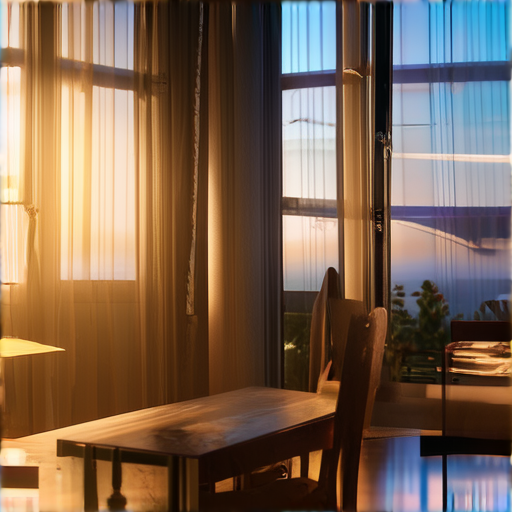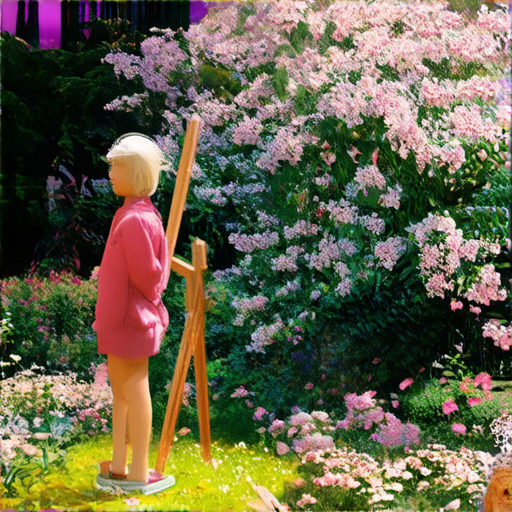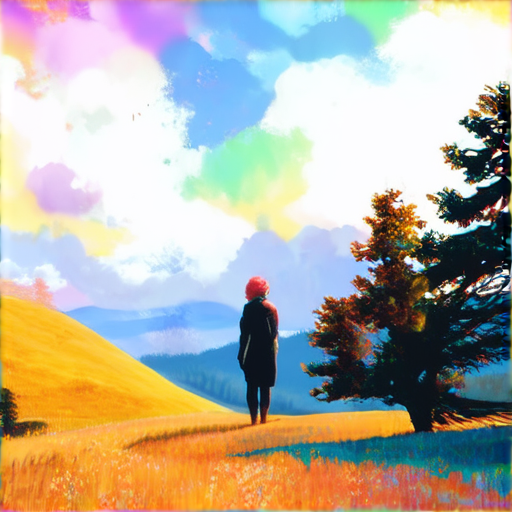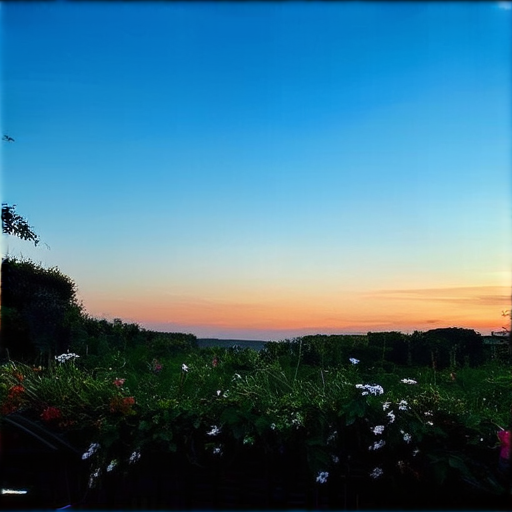Embarking on a journey to master art techniques can be both exhilarating and intimidating, especially for those who are just starting out. With countless styles, mediums, and approaches to explore, it’s easy to feel overwhelmed by the sheer scope of possibilities. However, by breaking down the process into its fundamental components, we can gain a deeper understanding of the core principles that underlie successful artistic expression.

The 7 Fundamentals of Art
As an artist, understanding the fundamental principles of art is essential to creating visually appealing and effective pieces.
-
Line
A line is a continuous mark made on a surface by a drawing tool. Lines can vary in width, length, direction, and curvature, and are used to define shape, form, and movement in a composition.
-
Shape
A shape is a self-contained area with a defined boundary. Shapes can be geometric, such as circles and squares, or organic, such as free-flowing curves and irregular forms.
-
Space
Space refers to the negative areas between and around objects in a composition. Space can be used to create a sense of depth, distance, and atmosphere in a piece.
-
Value
Value refers to the lightness or darkness of a color or object. Values can be used to create contrast, harmony, and mood in a composition.
-
Form
Form refers to the three-dimensional qualities of an object or shape. Form can be created through the use of lines, shapes, and values.
-
Texture
Texture refers to the surface quality or “feel” of an object or material. Texture can be physical, such as rough or smooth, or visual, such as patterned or uniform.
-
Color
Color refers to the property of an object that is perceived by the eye as a result of the way it reflects or emits light. Colors can be used to create mood, atmosphere, and emphasis in a composition.
By mastering these fundamental principles of art, artists can create compositions that engage, inform, and inspire their audiences.
At Artfull Journey, we believe that understanding the basics of art is essential to creating beautiful and meaningful works of art.
We offer a variety of resources and tutorials to help artists learn and master the fundamental principles of art, including lessons on line, shape, space, value, form, texture, and color.
Whether you’re just starting out or looking to improve your skills, our resources are designed to help you take your art to the next level.
So why wait? Start exploring the world of art today and discover the joy of creating something truly special.
Techniques of Art
As an artist, I’m constantly exploring new ways to express myself and bring my ideas to life. From traditional mediums to modern digital tools, there are countless techniques to master.
-
Drawing
Drawing is a fundamental technique that involves creating images using various tools and mediums, such as pencils, charcoal, ink, and paint. It requires skill, patience, and practice to develop your skills and style.
-
Painting
Painting is a versatile medium that allows you to experiment with color, texture, and composition. Whether you’re working with oil paints, acrylics, or watercolors, painting can be a therapeutic and expressive outlet.
-
Sculpture
Sculpture involves shaping and manipulating materials, such as clay, stone, wood, or metal, to create three-dimensional artworks. It requires a combination of technical skills and creativity to bring your vision to life.
-
Printmaking
Printmaking is a process-based technique that involves creating multiple copies of an image using various techniques, such as etching, lithography, or screen printing. It allows you to explore different textures, colors, and compositions.
-
Photography
Photography is a contemporary medium that involves capturing images using cameras and digital technology. It requires an understanding of lighting, composition, and editing software to produce high-quality prints and digital files.
Exploring New Techniques
As an artist, it’s essential to stay curious and keep learning new techniques to stay inspired and motivated. Some popular techniques to explore include:
- Collage
- Mixed media
- Street art
- Abstract expressionism
- Digital art
Practice and Experimentation
The key to mastering any technique is practice and experimentation. Don’t be afraid to try new things, take risks, and push boundaries. Remember, art is a journey, and the most important thing is to have fun and enjoy the process.
Getting Started
If you’re just starting out, begin by experimenting with different mediums and techniques. Take classes, workshops, or online courses to learn new skills and gain confidence. Join art communities, attend exhibitions, and connect with fellow artists to stay inspired and motivated. Most importantly, remember why you started creating art in the first place – for the joy of self-expression and personal growth.
Discovering Your Unique Artistic Voice
As an artist, developing your own distinct style is crucial for standing out in a crowded creative landscape.
-
Explore Different Techniques and Mediums
Experiment with various art forms, tools, and materials to discover what works best for you.
- Try drawing, painting, sculpting, or printmaking to see which medium sparks your creativity.
- Investigate different brushstrokes, textures, and color palettes to develop your unique visual language.
- Study the work of other artists, both past and present, to gain insight into their creative processes and styles.
Analyze Your Influences and Preferences
Reflect on the art, people, and experiences that inspire you, and identify common themes and motifs.
- Make a list of your favorite artists, styles, and movements, and analyze what draws you to them.
- Consider how your personal experiences, emotions, and values shape your artistic vision.
- Identify patterns and consistencies in your work, and use these as a foundation for further development.
Develop a Consistent Practice and Routine
Establish a regular schedule for creating art, and stick to it to hone your skills and explore your style.
- Schedule dedicated time for art-making, whether daily, weekly, or monthly.
- Create a conducive workspace that inspires productivity and focus.
- Set achievable goals and challenges for yourself, and track your progress to stay motivated.
Seek Feedback and Refine Your Craft
Showcase your work to others, and ask for constructive feedback to refine your style and technique.
- Join online communities, local art groups, or workshops to connect with fellow artists and receive feedback.
- Participate in critiques, exhibitions, or competitions to test your work and gather insights.
- Be open to constructive criticism, and use it as an opportunity to grow and improve your artistic voice.
By embracing experimentation, self-reflection, and dedication, you’ll be well on your way to discovering your unique artistic voice and style.

Improving My Art Skills
To enhance your artistic abilities, consider the following steps:
-
Develop a Daily Practice Routine
Set aside dedicated time each day to engage in artistic activities, whether drawing, painting, or sculpting.
-
Experiment with Various Mediums and Techniques
Explore different materials and methods to discover what works best for you and expands your skillset.
-
Study the Work of Other Artists
Analyze the styles, compositions, and techniques employed by renowned artists to gain insight into their creative processes.
-
Join a Community of Artists
Connect with fellow creatives through online forums, local art groups, or workshops to share knowledge, receive feedback, and stay motivated.
-
Learn from Critiques and Feedback
Seek constructive criticism from peers, mentors, or instructors to identify areas for improvement and refine your skills.
-
Stay Inspired and Motivated
Follow art blogs, attend exhibitions, and explore new sources of inspiration to maintain a passion for creativity and artistic growth.
-
Pursue Formal Education or Training
Consider enrolling in classes, workshops, or degree programs to acquire technical skills, learn from experienced instructors, and access valuable resources.
-
Practice Patience and Persistence
Recognize that artistic development takes time, effort, and dedication; remain committed to your goals and celebrate small victories along the way.
-
Embrace Failure and Learn from Mistakes
Treat failures and setbacks as opportunities to grow, experiment, and refine your approach, ultimately leading to improved artistic outcomes.
By incorporating these strategies into your artistic journey, you’ll be well on your way to enhancing your skills and achieving your creative aspirations.
Unlocking Your Creative Potential
To improve your creativity in art, start by embracing experimentation and taking risks.
-
Set aside dedicated time for exploring new mediums, techniques, and styles.
-
Engage with diverse art forms, such as painting, sculpture, photography, or digital art, to broaden your understanding of creative expression.
-
Practice mindfulness and meditation to cultivate a clear mind and tap into your subconscious thoughts.
-
Seek out inspiring environments, whether it’s a studio, outdoor space, or community center, to stimulate your imagination.
-
Collaborate with fellow artists, join online communities, or participate in group projects to foster creative exchange and learn from others.
Developing Your Skills
Continuous learning and skill-building are essential for artistic growth.
-
Take online courses, workshops, or classes to develop specific skills, such as drawing, color theory, or composition.
-
Study the work of other artists, analyzing their techniques, styles, and approaches to understand what inspires you.
-
Experiment with different tools, software, or materials to discover new ways of expressing yourself.
-
Pursue mentorship or guidance from experienced artists to receive constructive feedback and support.
-
Stay updated on industry trends, exhibitions, and events to stay inspired and motivated.
Finding Inspiration
Surround yourself with sources of inspiration to fuel your creativity.
-
Explore nature, architecture, or urban landscapes to find unique perspectives and subjects.
-
Read books, articles, or poetry to spark ideas and explore new themes.
-
Listen to music, podcasts, or TED talks to stimulate your imagination and gain new insights.
-
Visit museums, galleries, or exhibitions to see the work of other artists and stay connected to the art world.
-
Engage with social media platforms, online forums, or art communities to connect with fellow artists and stay informed about industry developments.
Maintaining Motivation
Overcoming creative blocks and staying motivated requires discipline and self-care.
-
Establish a regular routine and schedule dedicated time for creating art.
-
Set achievable goals and deadlines to maintain momentum and track progress.
-
Practice self-care, exercise regularly, and maintain a healthy lifestyle to ensure physical and mental well-being.
-
Join a supportive community or find an accountability partner to stay motivated and encouraged.
-
Celebrate your successes, no matter how small, to reinforce your confidence and passion for art.

Can I Learn Art on My Own?
As someone who has always been fascinated by art, I’ve often wondered if it’s possible to learn art on my own.
- I believe anyone can learn art, regardless of their background or experience level.
- The beauty of learning art on your own lies in its flexibility and individualization.
- You can set your own pace, explore different styles and mediums, and develop a unique artistic voice.
Benefits of Learning Art on Your Own
- Flexibility**: You can learn art whenever and wherever you want, whether it’s during your lunch break or late at night.
- Individualization**: You can tailor your learning experience to suit your needs and interests, focusing on the topics and techniques that excite you most.
- Cost-effectiveness**: Learning art on your own eliminates the need for expensive classes or workshops, making it a budget-friendly option.
- Self-expression**: By learning art on your own, you have the freedom to express yourself creatively and experiment with different styles and mediums.
Resources for Learning Art on Your Own
- Skillshare: An online learning platform offering a wide range of art courses and workshops.
- Artist’s Network: A website providing tutorials, videos, and articles on various art techniques and styles.
- DeviantArt: A community-driven platform showcasing artwork from around the world, offering inspiration and feedback.
Tips for Successful Self-Learning
- Set goals and deadlines**: Establishing clear objectives and timelines helps you stay motivated and focused.
- Practice regularly**: Consistency is key when developing your artistic skills, so make time for regular practice sessions.
- Seek feedback and support**: Join online communities or find local art groups to connect with fellow artists, share your work, and receive constructive feedback.
- Experiment and take risks**: Don’t be afraid to try new things and step out of your comfort zone – it’s all part of the learning process!
Conclusion
Learning art on your own requires dedication, patience, and persistence, but the rewards are well worth the effort.
By embracing the flexibility and individualization of self-learning, you can unlock your full creative potential and develop a unique artistic voice.

0 Comments